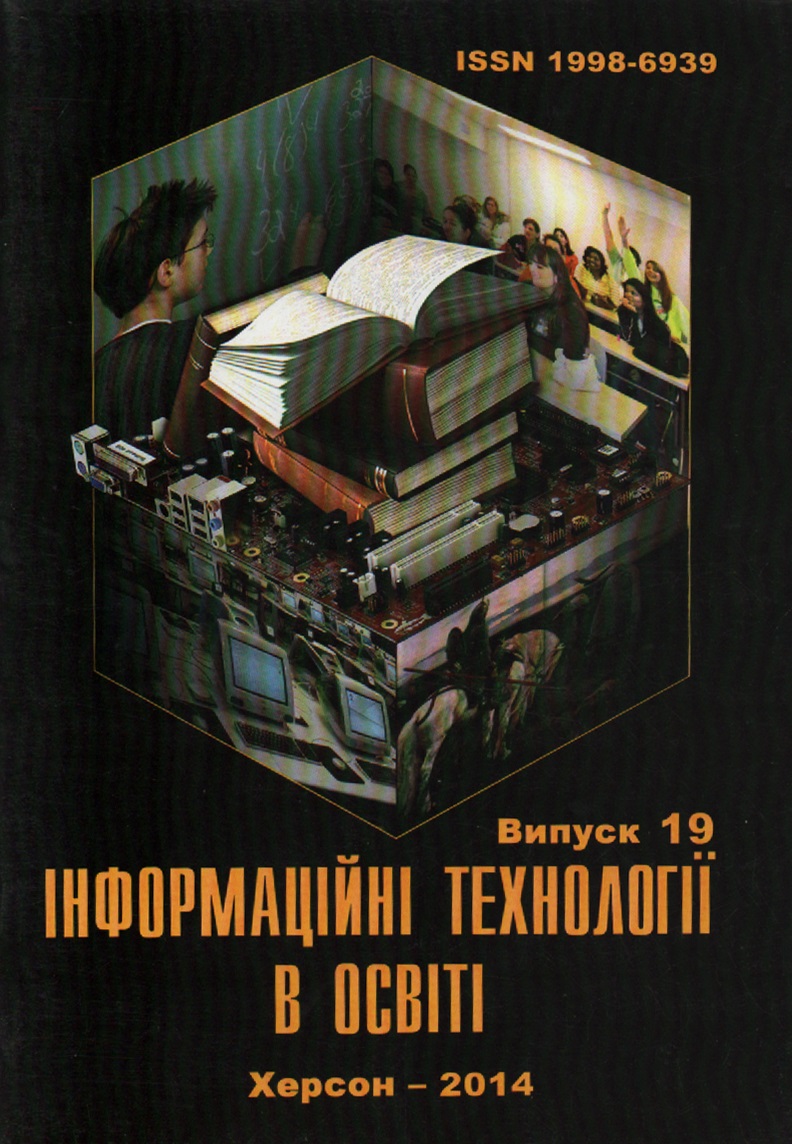APPLICATION OF VIRTUAL SOCIAL NETWORKS FOR PURPOSES OF GENERAL SECONDARY EDUCATION
DOI:
https://doi.org/10.14308/ite000491Keywords:
virtual social networks, secondary schools, pupils, social network servicesAbstract
The rapid development of information technology, which happens all the time, helps to activate the process of virtualization world education and calls for the revision and introduction of modern methods and tools in the educational process. In the information society becomes wider network of social services and as a result of the spread of virtual education, training and social networks that bring people together around common interests or values to form a particular social group users by meeting their needs.
Virtual social networks are a powerful tool to maintain communication of millions of people on the Internet, as some social communities already have hundreds of millions of registered users.Believe that consideration of the possibilities of virtual social networks in the coming years is relevant, because it opens prospects for using them for training purposes in its entirety.
In the article the services offered by virtual social networks are considered; the possibilities of using of these services as the tools of educational process organization are defined; the positive and negative features of virtual social networks are outlined; the opportunities and ways of using of virtual social networks in purposes of secondary education are analyzed.
Downloads
Metrics
References
1. Гуревич Р. Інтернет і його соціальні мережі в сфері освіти: напрями використання / Р. Гуревич / Зб. наук. пр. ІІІ Міжнар. наук.-практ. конф. «Інформаційно-комунікаційні технології в сучасній освіті: досвід, проблеми, перспективи» – С. 52-56. – Режим доступу: http://ubgd.lviv.ua/konferenc-/kon_ikt/plen_zasid/Gurevuch.pdf. – дата доступу 01.08.2013.
2. Івашньова С. В. Використання соціальних сервісів та соціальних мереж в освіті / С. В. Івашньова // Наукові записки НДУ ім. М. Гоголя. Психолого-педагогічні науки. – 2012. – № 2. – С. 15-17.
3. Капустян І. Шведський досвід проектної організації інформаційно-комп’ютерної освіти / Інга Капустян // Імідж сучасного педагога. – 2011. – № 1(110). – C. 40-41.
4. Клименко О. А. Социальные сети как средство обучения и взаимодействия участников образовательного процесса / О. А. Клименко // Теория и практика образования в современном мире: материалы Междунар. науч. конф. (г.Санкт-Петербург, фев. 2012 г.). – С.-Пб.: Реноме, 2012. – С. 405-407.
5. Крибель С. С. Использование социальных сетей в образовании / С. С. Крибель, В. В. Шобухова // Информатика и образование. – 2012. – № 4 (233). – С. 66-68.
6. Ломакин Д. С. Роль социальных сетей в современном образовательном процессе / Д. С. Ломакин / Веб-сайт Профобразовние РФ. – Режим доступа : http://rossobr.ru/?p=189. – дата доступа 24.06.2013. – заголовок с экрана.
7. Свєтлорусова А. В. Використання віртуальних спільнот для розвитку інформаційно-комунікаційних компетентностей старшокласників / А. В. Свєтлорусова // Науковий часопис НПУ ім. М. П. Драгоманова. Сер. 5: Пед. науки : реалії та перспективи – Вип. 28: Зб. наук. пр. / за ред. В. П. Сергієнко. – К. : Вид-во НПУ ім. М. П. Драгоманова, 2011. – 212-216.
8. Свєтлорусова А. В. Роль віртуальних співтовариств у формуванні інформаційно-комунікаційної компетентності старшокласників [Електронний ресурс] / А. В. Свєтлорусова / Звітна наукова конференція Інституту інформаційних технологій і засобів навчання НАПН України: матеріал. наук. конф. – Київ: ІІТЗН НАПН України, 2011. – С. 31-33. – Режим доступу : http://www.ime.edu-ua.net/cont/tezy_2011.pdf.
9. Фещенко А. В. Социальные сети в образовании: анализ опыта и перспективы развития / А. В. Фещенко // Открытое и дистанционное образование. – 2011. – № 3. – С. 44-50.
</uk>
<en>
1. Hurevych R. Internet i yoho sotsialni merezhi v sferi osvity: napriamy vykorystannia / R. Hurevych / Zb. nauk. pr. III Mizhnar. nauk.-prakt. konf. «Informatsiino-komunikatsiini tekhnolohii v suchasnii osviti: dosvid, problemy, perspektyvy» – S. 52-56. – Rezhym dostupu: http://ubgd.lviv.ua/konferenc-/kon_ikt/plen_zasid/Gurevuch.pdf. – data dostupu 01.08.2013.
2. Ivashn’ova S. V. Vykorystannia sotsialnykh servisiv ta sotsialnykh merezh v osviti / S. V. Ivashn’ova // Naukovi zapysky NDU im. M. Hoholia. Psykholoho-pedahohichni nauky. – 2012. – # 2. – S. 15-17.
3. Kapustian I. Shvedskyi dosvid proektnoi orhanizatsii informatsiino-kompiuternoi osvity / Inha Kapustian // Imidzh suchasnoho pedahoha. – 2011. – # 1(110). – C. 40-41.
4. Klymenko O. A. Sotsyalnыe sety kak sredstvo obuchenyia y vzaymodeistvyia uchastnykov obrazovatelnoho protsessa / O. A. Klymenko // Teoryia y praktyka obrazovanyia v sovremennom myre: materyalы Mezhdunar. nauch. konf. (h.Sankt-Peterburh, fev. 2012 h.). – S.-Pb.: Renome, 2012. – S. 405-407.
5. Krybel S. S. Yspolzovanye sotsyalnыkh setei v obrazovanyy / S. S. Krybel, V. V. Shobukhova // Ynformatyka y obrazovanye. – 2012. – # 4 (233). – S. 66-68.
6. Lomakyn D. S. Rol sotsyalnыkh setei v sovremennom obrazovatelnom protsesse / D. S. Lomakyn / Veb-sait Profobrazovnye RF. – Rezhym dostupa : http://rossobr.ru/?p=189. – data dostupa 24.06.2013. – zaholovok s эkrana.
7. Svietlorusova A. V. Vykorystannia virtualnykh spilnot dlia rozvytku informatsiino-komunikatsiinykh kompetentnostei starshoklasnykiv / A. V. Svietlorusova // Naukovyi chasopys NPU im. M. P. Drahomanova. Ser. 5: Ped. nauky : realii ta perspektyvy – Vyp. 28: Zb. nauk. pr. / za red. V. P. Serhiienko. – K. : Vyd-vo NPU im. M. P. Drahomanova, 2011. – 212-216.
8. Svietlorusova A. V. Rol virtualnykh spivtovarystv u formuvanni informatsiino-komunikatsiinoi kompetentnosti starshoklasnykiv [Elektronnyi resurs] / A. V. Svietlorusova / Zvitna naukova konferentsiia Instytutu informatsiinykh tekhnolohii i zasobiv navchannia NAPN Ukrainy: material. nauk. konf. – Kyiv: IITZN NAPN Ukrainy, 2011. – S. 31-33. – Rezhym dostupu : http://www.ime.edu-ua.net/cont/tezy_2011.pdf.
9. Feschenko A. V. Sotsyalnыe sety v obrazovanyy: analyz opыta y perspektyvы razvytyia / A. V. Feschenko // Otkrыtoe y dystantsyonnoe obrazovanye. – 2011. – # 3. – S. 44-50.
</en>
Downloads
Published
How to Cite
Issue
Section
License
This work is licensed under a Creative Commons Attribution-NonCommercial-ShareAlike 4.0 International License.






























